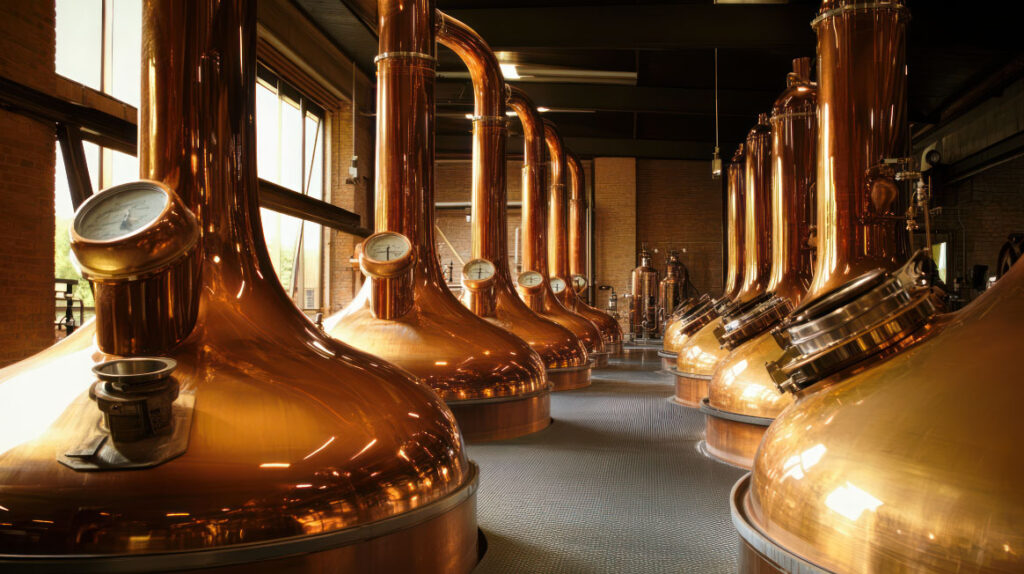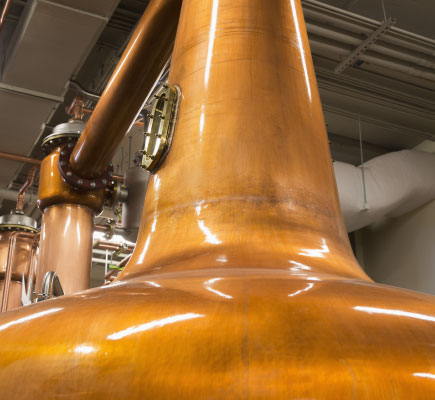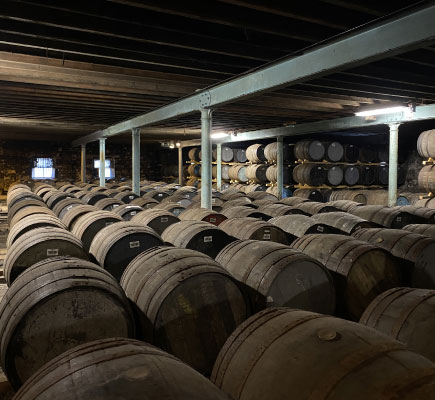
From Barley to Barrel: The Whisky Journey
The creation of Scotch whisky is a meticulous process, beginning with the selection of quality barley. This barley undergoes malting, where it's soaked and germinated, then dried to halt the process. The malted barley is ground and mixed with warm water in a mash tun, extracting fermentable sugars to produce wort. Yeast is added to the wort in washbacks, initiating fermentation and creating a low-alcohol liquid called wash. This wash is distilled, typically twice, in copper pot stills, refining the spirit. The resulting new make spirit is then matured in oak casks, allowing it to develop the complex flavours characteristic of Scotch whisky.
Understanding industry-specific abbreviations is essential for navigating the world of whisky. Here are some commonly used terms:
ABV (Alcohol by Volume): Indicates the percentage of alcohol in the whisky.
NAS (No Age Statement): Whiskies without a specified age on the label.
OB (Original Bottling): Bottled by the distillery that produced the whisky.
IB (Independent Bottling): Bottled by a third party, not the original distillery.
CS (Cask Strength): Whisky bottled at the strength it comes out of the cask, without dilution.
NMS (New Make Spirit): Freshly distilled spirit before maturation.
RLA (Regauged Litres of Alcohol): Measurement of alcohol content after accounting for evaporation and other factors.
OLA (Original Litres of Alcohol): Initial measurement of alcohol content at the time of cask filling.
HMRC (His Majesty’s Revenue and Customs): UK government department responsible for the regulation of whisky production and taxation.
Dunnage Warehouse: Traditional storage facility with earth floors and thick walls, providing stable maturation conditions.
Angels’ Share: Portion of whisky that evaporates during maturation.
Bung: The stopper used to seal a cask.
Char Level: Degree to which the inside of a cask is charred, affecting flavour development.
Regauge: Process of measuring the current volume and strength of whisky in a cask.
Whisky casks come in various sizes, each influencing the maturation process differently. Here are standard cask types used in the UK:
Blood Tub (30–50 litres): Small cask used for private bottlings; offers rapid maturation due to high wood-to-liquid ratio.
Quarter Cask (50 litres): One-quarter the size of a butt; promotes intense interaction between spirit and wood.
American Standard Barrel (190–200 litres): Commonly used in bourbon production; often repurposed for Scotch whisky maturation.
Hogshead (225–250 litres): Constructed by adding staves to a bourbon barrel; widely used in Scotch whisky industry.
Barrique (250–300 litres): Traditional wine cask; occasionally used for whisky, imparting unique flavours.
Puncheon (450–500 litres): Large cask used for rum and sherry; imparts rich flavours to whisky.
Butt (475–500 litres): Standard cask for sherry maturation; commonly used for ageing Scotch whisky.
Port Pipe (550–650 litres): Long, slender cask traditionally used for port; used in whisky for finishing.
Gorda (700 litres): Very large cask; less common due to size, but used for blending purposes.
The choice of cask size affects the whisky’s flavour profile, maturation time, and overall character.


Malting and Mashing: The Foundation Steps
The journey of Scotch whisky begins with malting, where barley is soaked in water to initiate germination, activating enzymes that convert starches into sugars. This germination is halted by drying the barley in kilns, often using peat smoke to impart a distinctive flavour. The dried malt is then ground into grist and combined with warm water in a mash tun. This process extracts the sugars, creating a sweet liquid known as wort. The quality of water used is crucial, as it influences the character of the whisky. These foundational steps are vital in setting the stage for the whisky's development.
Fermentation: Transforming Sugars into Alcohol
Fermentation is a critical phase in whisky production, where the wort is transferred to large vessels called washbacks. Here, yeast is added to the wort, initiating a fermentation process that typically lasts 48 to 60 hours. During this time, the yeast converts the sugars into alcohol, producing a beer-like liquid known as wash, with an alcohol content of around 6 - 8%. This process also generates various congeners, compounds that contribute to the flavour and aroma of the final whisky. The fermentation stage is essential for developing the complexity and character that Scotch whisky is renowned for.
Distillation: Refining the Spirit's Essence
Distillation is the process of concentrating and purifying the alcohol in the wash. The wash is heated in a copper pot still, causing the alcohol to vaporise. These vapours rise and condense in a cooling system, separating the alcohol from impurities. This process is typically repeated in a second still, known as the spirit still, to further refine the spirit. The distiller carefully selects the 'heart' of the distillation, which is the portion suitable for maturation. The shape and size of the stills, along with the distillation technique, significantly influence the character and flavour profile of the resulting whisky.
Maturation and Cask Sales: The Final Steps
After distillation, the new make spirit is filled into oak casks and stored in warehouses to mature for a minimum of three years, as required by Scotch whisky regulations. During maturation, the whisky interacts with the wood, absorbing flavours and developing its colour and complexity. Factors such as cask type, warehouse conditions, and maturation duration influence the final product. Once matured, the whisky can be bottled or sold as casks to independent bottlers, collectors, or investors. Cask sales offer opportunities for personalised bottlings and investment in ageing whisky, providing a unique connection to the Scotch whisky tradition.



